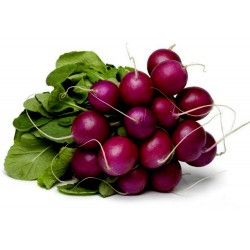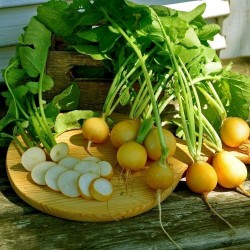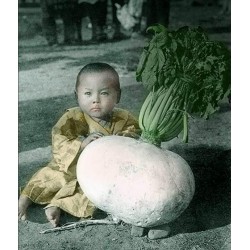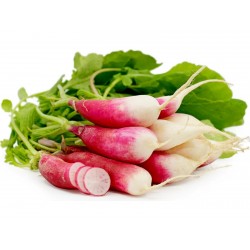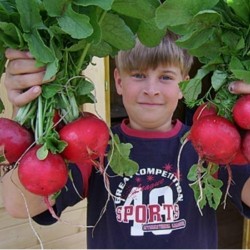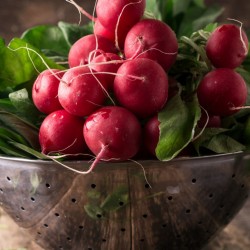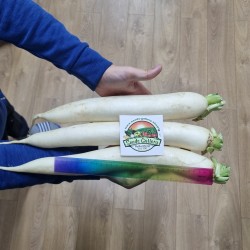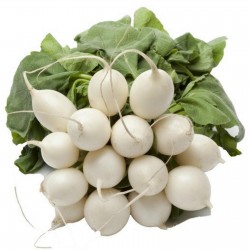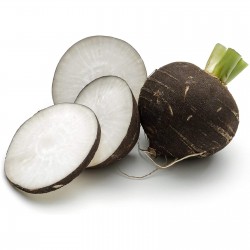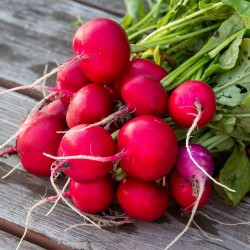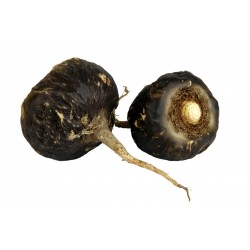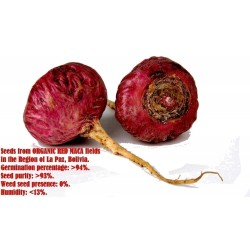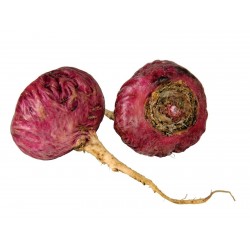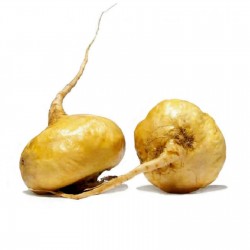
Гигантское растение (с гигантскими плодами)

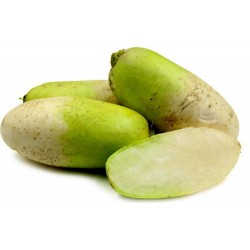
Native Korean Radish YEOL...
Цена
2,45 €
(SKU: VE 206)
Seeds Gallery EU,
5/
5
<h2><span style="text-decoration: underline;"><strong><em>Native Korean Radish YEOL MOO Seeds</em></strong></span></h2>
<h3><span style="color: #fb0101;"><strong>Price for Package of 20 seeds.</strong></span></h3>
<p><span>Korean radish are larger than most common radishes. They have a crisp, firm flesh that offers a relatively mild radish flavor and spice. Its thick, smooth skin is creamy white and capped with pale green shoulders. Though commonly sold with the greens removed both the root and the greens of this radish are edible. Its flesh is white with a texture and taste similar to that of the daikon radish. Unlike the carrot shaped daikon however, the Korean radish is rounded and plump with an oblong shape.</span></p>
<p><strong><span>Seasons/Availability</span></strong></p>
<p><span>Korean radishes are available year-round with fall and winter harvests offering the most flavorful radishes.</span></p>
<p><strong><span>Current Facts</span></strong></p>
<p><span>The Korean radish (Raphanus sativus), is an annual, cool season root vegetable and a member of the Brassicaceae or mustard family. Related to the daikon radish, the Korean radish is also known as Lo Bok, Mu and Moo. A hybrid variety known as tae baek was developed for a late summer to early winter growing season as the plants aren't normally productive in warm weather conditions.</span></p>
<p><strong><span>Nutritional Value</span></strong></p>
<p><span>The Korean radish provides dietary fiber, vitamin C, and carotene. Both the raw Korean radish and the kimchee are popularly used in Korean cuisine and are believed to be beneficial in supporting digestive health.</span></p>
<p><strong><span>Applications</span></strong></p>
<p><span>The Korean radish is most commonly used as an ingredient in kimchee. They are also popularly sliced thin, pickled and served as an appetizer or accompaniment to grilled meats. Its flesh is dense and crisp and stands up well to cooking. Add to soups, stews and stir-fries or slice thick and braise with pork or beef. Raw Korean radish can be thinly sliced and added to salads or bahn mi sandwiches. To store, wrap tightly in plastic and refrigerate. Best used within two weeks.</span></p>
<p><strong><span>Ethnic/Cultural Info</span></strong></p>
<p><span>In Korea, this radish is favored as a major ingredient in hot Korean kimchee. This variety is also commonly used for pickling in the Far East.</span></p>
<p><strong><span>Geography/History</span></strong></p>
<p><span>Most popular in Korean and Japanese cuisine, Korean radishes are grown year round throughout Asia. The Korean radish thrives in cool climates and is typically ready to harvest in fifty to seventy days.</span></p>
<p><strong><span>Featured Restaurants</span></strong></p>
<p><span>Restaurants currently purchasing this product as an ingredient for their menu.</span></p>
<p><span>The Bellows San Marcos CA 619-395-6325</span></p>
<p><span>Happy Pantry Carlsbad CA 858-449-4666</span></p>
<p><span>Izakaya Pacific Beach San Diego CA 858-274-2742</span></p>
<p><span>Saiko Sushi-North Park San Diego CA 619-886-6656</span></p>
<p><span>Gold Mine Natural Food Company Poway CA 858-537-9830</span></p>
<p><span>Knotty Barrel San Diego CA 619-269-7156</span></p>
<p><span>Sushi Tadokoro San Diego CA 619-347-2792</span></p>
<p><span>Davanti Enoteca India St. San Diego CA 619-237-9606</span></p>
<p><span>Harney Sushi Old Town San Diego CA 619-295-3272</span></p>
<p><span>Stella Public House San Diego CA 512-799-6462</span></p>
<p><span>Gyu-Kaku San Diego San Diego CA 858-693-3790</span></p>
<p><span>Fish Pit San Diego CA 619-546-9369</span></p>
<p><span>Belmont Park Cannonball San Diego CA 858-228-9283</span></p>
<p><span>Fishbone Kitchen San Diego CA 619-643-2261</span></p>
<p><strong><span>Recipe Ideas</span></strong></p>
<p><strong><span>Recipes that include Korean Radish. One is easiest, three is harder.</span></strong></p>
<p><span>Korean Bapsang Korean Radish Soup (Muguk)</span></p>
<p><span>Beyond Kimchee Radish Pancake</span></p>
<p><span>Maangchi Cooked Radish Side Dish</span></p>
<p><span>Eating and Living Korean Radish Soup (Mu Guk/Moo Guk)</span></p>
<p><span>No Recipes Radish Kimchi</span></p>
<p><span>The Kitchn Vegetarian Dduk Gook (Korean Rice Cake Soup)</span></p>
<p><span>Umami Holiday Korean Pickled Radishes and Jalapenos</span></p>
<p><span>Korean Bapsang Musaengchae (Spicy Korean Radish Salad)</span></p>
<p><span> </span></p>
VE 206 (20 S)





